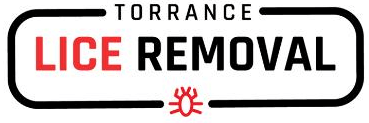Head Lice vs. Dandruff
Lice and dandruff are both uncomfortable conditions that cause your scalp to itch, and they are easily confused with each other. While lice are a temporary infestation, however, dandruff is a chronic skin condition.
Head lice, also known as pediculus humanus capitis, are parasitic insects that live and lay eggs on the scalp. They drink human blood, and their bites cause severe itching.
According to the Centers for Disease Control and Prevention (CDC), there are six to 12 million cases of head lice each year in the United States. Young children are most at risk because they frequently have hair-to-hair contact with others at daycare or school.1
Dandruff, also known as seborrheic dermatitis, causes small pieces of dry skin to flake off of the scalp. When seborrheic dermatitis occurs on an infant’s scalp, it is known as cradle cap.
While lice are highly contagious, dandruff is not. Fortunately, both conditions can be treated safely and effectively at home.
Signs and Symptoms
While both lice and dandruff can cause your scalp to itch, their symptoms are different.
Lice
The classic symptom of lice is intense itching. The bites of an adult louse cause an allergic reaction, which leads to itching. You may even feel a crawling sensation. Young children may describe this sensation as tickling in their hair.
Little ones may also have trouble sleeping when they have lice since head lice are most active at night. The scalp may also appear red and bleed due to frequent scratching.2
Lice and dandruff can look the same at first glance, but they occur in different locations. Lice lay their eggs (called nits) on the hair shaft itself. Nits adhere to your hair and will not flake off like dandruff does. Nits are usually white or yellow and in the shape of a teardrop.
Adult lice are tan, brown, or black, and may be visible under a magnifying glass. A fully grown louse is about the size of a sesame seed.1 They are usually found in the scalp and hair around the ears and neckline.
Dandruff
Like lice, dandruff can be itchy, but it is usually not as intense as the itching caused by lice. The drier the scalp, the more dandruff will usually itch. When you have dandruff, your scalp generally feels either very oily or very dry. You may notice that symptoms worsen during the colder months due to the dry air.
Dandruff affects the scalp and not the hair itself. Looking closely, you will see white or yellow flakes coming from the scalp; these flakes then fall off easily.
Seborrheic dermatitis can also affect other areas of the body, but is most commonly found on the scalp.3 While lice look black or brown, dandruff will appear white or yellow.
Causes
Lice are caused by an infestation of parasitic insects, while dandruff is caused by a yeast that grows on everyone’s skin called malassezia and inflammation.
Lice
Lice are highly contagious. If you come into close contact with someone with lice, such as from hugging, the lice can easily crawl from their head to yours. Lice cannot jump or fly. Sharing hats or hair brushes is another way to become infected with lice, but head-to-head contact is the most common.
Lice are more commonly seen in young children and those who work with them. Higher-risk occupations include teachers, daycare workers, and babysitters.
Dandruff
Seborrheic dermatitis is a chronic condition that causes the skin cells on the scalp to shed too quickly, leading to dry, itchy flakes coming off in the hair and on clothing.
Dandruff is a chronic skin condition that causes dry, flaky skin. You cannot catch dandruff from another person. Lice, on the other hand, are highly contagious parasites. Young children are especially at risk of spreading lice to one another.
It is not always possible to prevent lice, but you can reduce your chances of getting them by taking precautions. Discourage your children from having hair-to-hair contact while playing with their friends and avoid sharing hair brushes or hats.
Frequently Asked Questions
What do lice look like vs. dandruff?
Lice are parasitic insects with six legs and are usually tan, brown, or black. Their eggs look like teardrop-shaped eggs that are white or yellow in color. They are found attached to the hair shaft close to the scalp.
Dandruff looks like white or yellow flakes of dry skin. It is usually bigger than lice and their eggs, and may appear greasy.
How do you check for lice vs. dandruff?
To check for lice and dandruff, start by parting the hair and examining the scalp. When you have dandruff, your scalp will appear either very oily or very dry. The flakes will be coming from the scalp and are easily brushed away.
Lice lay their eggs on the hair shaft about one-quarter inch from the scalp. The eggs are firmly secured to the hair and cannot be brushed away. Adult lice live on the scalp and usually appear tan, brown, or black. Sometimes a magnifying glass is helpful for identifying adult lice on the scalp.
How big is dandruff vs. lice?
Dandruff and lice are both extremely small, and it can be tough to tell them apart. An adult louse is about the size of a sesame seed, and their eggs are even smaller. Dandruff flakes are bigger than lice and often appear and feel greasy.
How do you know if it’s lice or dandruff?
One of the best ways to distinguish between lice and dandruff is the location. Dandruff describes dry skin flaking off from the scalp. The eggs of lice, on the other hand, adhere to the hair shaft itself. Using a magnifying glass, you may be able to see adult lice moving on the scalp. This is challenging because they are usually only active in the dark.
Another symptom to pay attention to is the itching. Lice bites cause intense itching, while dandruff itching feels more like uncomfortable dry skin.
If you’ve found yourself scratching your head lately, take a closer look. Dandruff will appear as white or yellow flakes of dry skin. Lice eggs, also known as nits, look like tiny yellow or white eggs in the shape of a teardrop. Adult lice are darker in color and about the size of a sesame seed.

